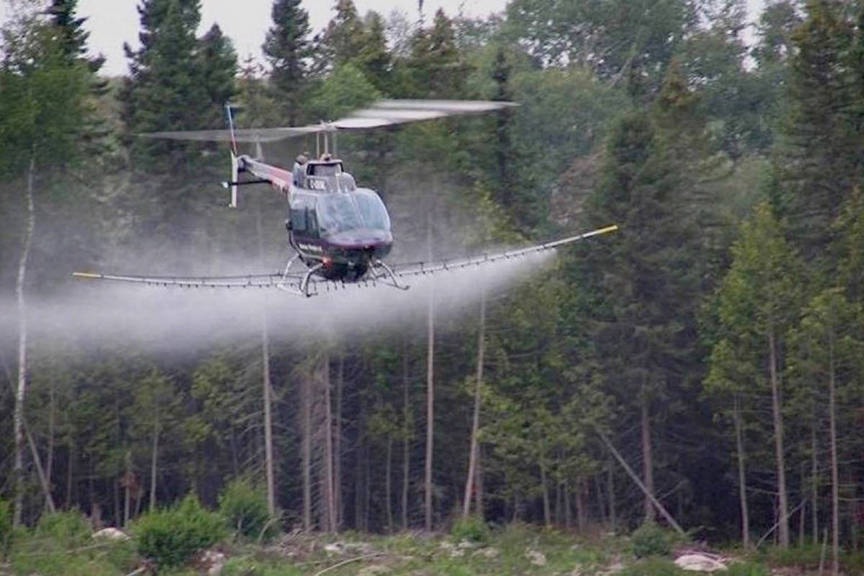The forestry practice of eliminating aspen stands is contributing to the intensity of forest fires in British Columbia.
Broadleaf trees like aspen act as natural fireguards because they’re less flammable than coniferous species.
But under forestry regulations, species like aspen are regarded as competitors with coniferous trees, which are preferred for their harvestable timber.
As a result, aspen are often eliminated by spraying with the herbicide glyphosate, the cheapest way of removing competition.
READ MORE: Burns Lake sawmills think outside the box to increase timber supply
“Chemical brushing with herbicides is one of the techniques Canfor uses to reduce this competition and increase seedling survival,” company spokesperson Michelle Ward told Lakes District News.
Ward explained that in the Houston area less than 5 per cent of the 5,400-5,600 hectare harvest area is sprayed to eliminate competitor species, which also includes grasses and fireweed.
Forestry companies are required by law to reduce competition with the main stock species.
Section 46.11(2) of the Forest and Range Practices Act Regulations states that no more than 2 ha, or 5 per cent of a reforested area is exempt from the “stocking standards.”
In everyday language, the stocking standards refer to commercial species like pine, spruce or Douglas fir, and non-commercial species like birch or aspen must be eliminated if their stands are larger than 2 ha.
“The problem is you’re precluding the existence of firebreaks. You need a 10-20 hectare patch of it. If it’s only 2 ha it’s too small, it’s useless as a firebreak. And this rule is applied across a huge area,” said James Steidle of the group Stop the Spray B.C.
Broadleaf species aren’t only essential as natural fireguards but in the larger forest ecosystem many species of birds build their nests in aspens where there are more insects for them to eat, and moose often graze on aspen.
The good news is that public opposition means glyphosate spraying is rarely done in the Lakes District, said Phil Burton, a professor of Ecosystem Science at UNBC.
In the licensed area of Hampton Lumber - owner of Babine and Decker Lake Products - no cut blocks have been sprayed in the last 20 years, said Steve Zika, CEO of Hampton Lumber.
Some even better news is that on a provincial level the areas sprayed with glyphosate have gone down from 18,546 ha in 2015 to 12,812 ha in 2017, according to a spokesperson from the Ministry of Forests, Lands, Natural Resource Operations and Rural Development.
For the Nadina district, 105 ha was sprayed in 2015, 197 in 2016 and 128 last year.
READ MORE: B.C. forestry ministry cutting back on use of herbicide glyphosate
However, aspen stands are still sometimes removed from forests in this region by other means.
“People [also] do it with saws. The main difference is that usually they’ll sprout back after being cut with a saw. But with the glyphosates it affects the roots as well, and reduces the chances of them growing back,” Burton said.
In the context of last summer’s intensive wildfires, wider swathes of aspen could help ensure future fires are less destructive.
“We need to re-open our land use plans and recognize the need for community protection zones in which getting that crop of conifer trees isn’t the priority, but rather reducing fire susceptibility,” he said.
“Maybe we should even plant belts of broadleaf trees around First Nations communities and villages and towns. So we can designate fire protection as a priority.”
